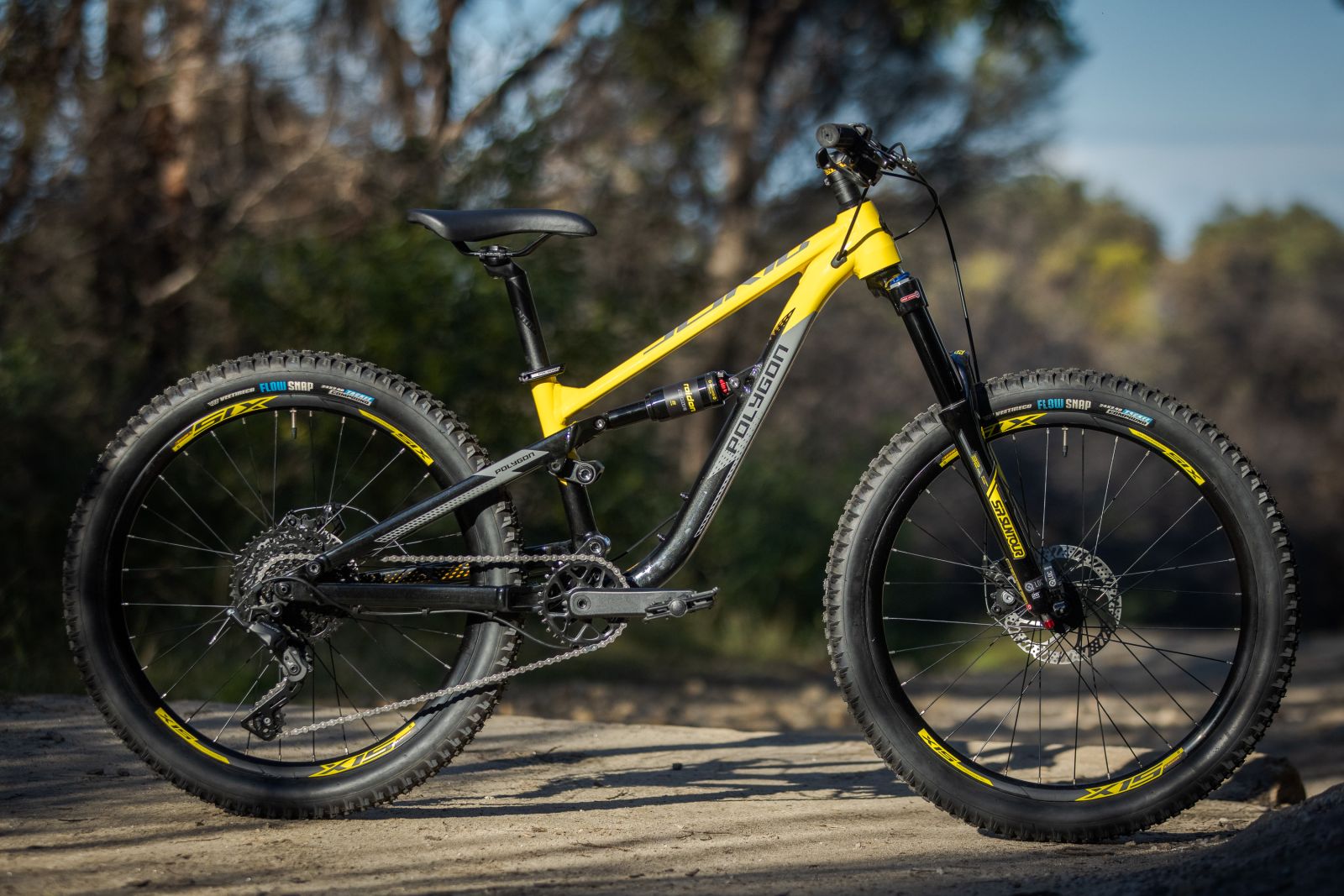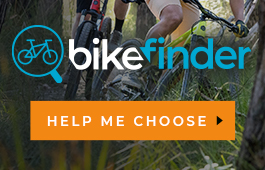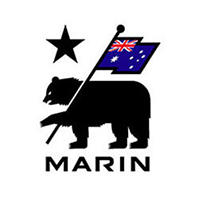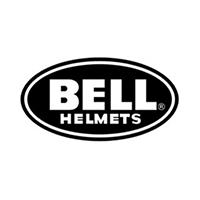Finding your Kid's Next Bike
On the hunt for your little one’s next bike? You may find this article helpful.
.jpg)
Buying your child a bike can be an exciting time for both you and them as this is their first chance to experience the enjoyment of cycling. Everyone remembers their excitement when they first swung a leg over a bike and felt the wind through their hair. The realisation that you can explore further, easier and faster than ever before is mind blowing. Choosing the right bike is vital to ensuring they have positive and reassuring first impressions.
There are so many different styles to choose from, how do you know which one is the best? Well, it's all about where your child wants to ride, how they will use the bike and what terrain they will be riding on.
.jpg)
Some children might prefer a mountain bike because they like to go off-road, or maybe someone has always wanted to ride their bike down the street on the pavement. You might notice that some bikes come with training wheels and others don't. This is so your child can learn to pedal with confidence they wont fall over.
This article will help you understand what kind of bike would work best for your child by considering their age, height, weight, skill level and other factors, including price range.
.jpg)
SIZING
Buying the right size bike is integral to ensuring your child has the most enjoyable experience possible. While we all understand that kids grow extremely fast and parents don’t want to purchase a new bike every year, a bike that’s too big may have some serious negative effects. It is about promoting the healthy lifestyle of cycling to your child and showing them how bikes can change their lives
If a bike is too big, hopping on and off the bike will become a difficult and scary experience for your child. A bigger bike will become intimidating as it is harder to control and less stable for the rider. These negative effects will reduce confidence and enjoyment, which will deter them from riding the bike.
.jpg)
We recommend buying a bike that fits your child at the time. If your child is in between sizes, it is better to look at the bigger size to ride it comfortably. If your child is already a confident and skilled rider, they can often ride a bigger bike than a child who is less comfortable on a bike.
When considering size, we also recommend considering the weight of a bike. The lightest bike you can purchase within your budget is the best bike to get. A more lightweight bicycle is easier to pedal, control and leads to a more enjoyable ride for your children.
.jpg)
Many people begin their journey towards buying their children a bike by using their age as a measure. Unfortunately, not all children at the age of 5 are the same height, neither are children at age 7 or 10 etc. Using your child's inseam is the best way to decide what size they need.
.jpg)
Kids Bike Sizes Chart
When selecting a kid's bike, a child’s inseam and height should be considered to get the best fitting bike. Click on wheel size to see our top picks for each size bike.

Kids Bike Sizes: Four Steps to Finding the Right Size
Using your child’s inseam in relation to the bike’s seat height is the best and most accurate way to ensure a perfect bike fit. The frame and the wheel size work together to determine the seat height of a bike.
So by selecting a bike based on seat height versus age, wheel, or frame size, you can ensure a great bike fit for your child even if they’ve never had a chance to try out the bike before you buy it! This not only makes riding much easier, but all the experts agree a good bike fit is necessary for safety too!
1. Measure Your Child’s Inseam
While most bike manufacturers base their sizing on your child’s age or height, we always recommend using the inseam measurement instead. It’s much more accurate!
.jpg)
- With shoes on, have your child stand against the wall, feet slightly apart
- Place a hardbound book between their legs, spine towards the crotch
- Raise the book until the spine of the book firmly hits their crotch
- Level the book with the floor and measure from the ground up to the book's spine – that’s the inseam!
2. Narrow Down Wheel Size Based on Inseam
Using your child’s inseam, find the one or two bike wheel size categories they fall into. In general, as long as your child’s inseam is appropriate for the bike, it’s better to buy a larger wheel size. Larger wheels have more stability and allow more room for growth.
For example, our 5-year-old shown above has an inseam of 19.5″ inches. Based on the bike size chart below, she could be on THREE different size bikes! The larger wheels of the 16″ and 20″, however, will be much better for her as she grows. The next step will help determine which of these two sizes is best.
.jpg) Kids Bike Size Chart – Inseam Measurement is Key!
Kids Bike Size Chart – Inseam Measurement is Key!
3. Find the Perfect Seat Height (Using Child’s Inseam and Riding Ability)
Now that you know what size(s) bike is likely best for your child, it’s time to consider your child’s riding ability. Why? The proper fit of a bike is based on the bike’s seat height compared to the child’s inseam. However, the seat height of a bike should be set differently based on if your child is a beginner, is experienced, or is using training wheels.
The seat height is the distance from the ground to the top of the seat and will help you narrow down your options even further and guarantee a great fit from day one! Beginning Riders (1st Bike After a Balance Bike or Training Wheels)
.jpg)
A beginning rider (including balance bike graduates) should be able to sit on the bike’s seat and have their feet flat on the ground. At this stage, a child needs to be able to easily stop their bike using their feet. As a result, their bike’s seat height should be set equal to their child’s inseam.
In the image above, our 5-year-old tester is on a 16-inch bike with the seat height set to 19.5″ to match her inseam. If she were a beginning rider, this bike would be a perfect size bike for her.
SIZING TIP: The seat of a child’s first pedal bike should be set at the same height as the child’s inseam.
4. Buy for Current Fit and Growth
Now that you know the desired seat height for your child’s bike, you can begin shopping for your bike! Ideally, you’ll find a bike with a minimum seat height that’s as close to (but without going over) the seat height you determined in step 3.
This allows the bike to fit perfectly now and offers the most room for growth, so you don’t have to buy another bike too soon!
Here’s an example using the bikes we just saw and our 5-year-old tester. Each of the following bikes is a great fit for a child her size, but the best one depends on the child’s experience and riding ability.
- Pello Revo 16″
(bike shown in the Beginning Riders section) has a minimum seat height of 19.5” - POLYGON RELIC 20″ has a minimum seat height of 22”.
- Schwinn 16”
(bike shown in the training wheels section) with a minimum seat height of 21”.
Suppose our 5-year-old tester is a beginning rider. In that case, the Pello Revo
.jpg)
If she is experienced, the POLYGON RELIC
Lastly, if she is using training wheels, the Schwinn 16
CHECK OUT OUR KIDS RANGE HERE
Sizing for experience levels
Beginning Riders (1st Bike After a Balance Bike or Training Wheels)
.jpg)
A beginning rider (including balance bike graduates) should be able to sit on the bike’s seat and have their feet flat on the ground. At this stage, a child needs to be able to easily stop their bike using their feet. As a result, their bike’s seat height should be set equal to their child’s inseam.
In the image above, our 5-year-old tester is on a 16-inch bike with the seat height set to 19.5″ to match her inseam. If she were a beginning rider, this bike would be a perfect size bike for her.
SIZING TIP: A child’s first pedal bike seat should be set at the same height as the child’s inseam.
Experienced Riders – 2nd Pedal Bike (and Beyond!)
.jpg)
An experienced rider, who knows how to comfortably start and stop a bike and use either a hand brake or a foot brake, should be able to sit on the bike’s saddle and have their tiptoes touch the ground. This means that the seat should be set 2 to 4 inches ABOVE the child’s inseam. Raising the seat allows for proper leg extension while pedalling, which maximizes the efficiency of each pedal stroke.
If our 5-year-old tester was an experienced rider, this 20-inch bike with the seat height set to 22.5″ (3 inches above her inseam) would be a perfect fit.
Style
.jpg)
Children's bikes come in as many varieties as adult bikes these days. It is important to understand the style of riding your child wants to do. For example, if your child wants to get into mountain biking or off-road, riding a flat bar commuter style bike will be dangerous and not be up to the rigorous riding. It is best to get a deep understanding of what your child will be riding.
It is also important to be realistic about the riding they will be doing. Sometimes you will find that your child wants a mountain bike or a BMX but, if they are predominantly commuting on the streets, it could end up being a less enjoyable ride for them.
Let's go through our range of kids' bikes and what they are best for.
.jpg)
Comfort
Comfort or “cruiser” bikes are exactly as the name suggests, designed for comfort and cruising. These bikes provide an upright and comfortable riding position for kids looking to ride leisurely. They are not designed for speed or efficiency. They are designed to be ridden on leisurely rides to school, the movies or just along the beach with their parents.
Comfort bikes usually have racks and baskets from the factory. They are optimum for carrying books, clothes, or toys. They also have mudguards and the required accessories to keep your child as dry as possible if the weather turns bad.
If your child wants a more efficient bike for commuting to school or something faster on the road, a flat bar road-style bike will be better suited. An MTB will be much better if they want to go off-road and get rowdy on rough terrain.
Shop Comfort
.jpg)
Rigid MTB
Rigid mountain bikes are perfect for smaller children to ride wherever they choose. Because children are so light and small, when a tyre is inflated to the correct pressure, it provides more than enough traction and comfort. They are the perfect entry point for those with a passion for exploring.
.jpg)
These bikes have been designed around hardtail mountain bikes, so the bikes remain stable yet fun to ride. They have no suspension to reduce the weight, enhance efficiency and reduce costs. Thanks to the cost savings, you can often see better components on the rest of the bike. Often with one gear up front and 8 at the back, they are the perfect bike for kids needing gears.
.jpg)
If your child wants to explore the town, experience the freedom a bike provides and enjoy the sensation of speed, these bikes are perfect for your child. They are versatile and a great way to see which style of riding they gravitate to the most. If they want to get more serious off-road, a mountain bike would be better suited for them.
Shop Rigid
.jpg)
Hardtail MTB
Hardtail mountain bikes have front suspension but a solid rear end. They give your children a new avenue of riding to explore. Instead of jumping in puddles, your child can now ride through them as fast as possible.
.jpg)
Stronger tyres with a knobbly texture provide extra traction with increased puncture protection. They have front suspension to help absorb the bumpy roots and rocks. Disc brakes are more powerful, more reliable and safer than their v-brake siblings. Hardtail mountain bikes are the perfect entry point for children who want to push boundaries and explore the outdoors.
.jpg)
The downside to these extra features like suspension and stronger components is weight. Hardtail mountain bikes are heavier than your city bikes or rigid mountain bikes. Wider and knobby tyres have increased drag and are harder to pedal for longer distances. Our dual-suspension bikes may be better suited if your child wants to explore the outdoors more and take on more difficult terrain. If they want a more efficient ride, check out our city bikes.
Shop Hardtail
.jpg)
Dual Suspension
Dual Suspension mountain bikes are primarily designed for off-road use. With both front and rear suspension, both wheels move with the terrain for increased traction and safety. As your child begins to charge harder, they need the improved performance of our D24 range.

Air sprung suspension is customisable to weight and is adaptable as your child grows. The powerful disc brakes are strong enough to stop your child safely from warp speed. The bike's frame and geometry have been optimised for maneuverability yet also stability.

We at Bicycles Online believe that when you spend this much on a bike for your child, you want it to last for a long time. Not only is the air suspension tuneable as your child grows, but we also use reach-adjustable brake levers, and the bike can fit 26-inch wheels in the future.

Because these bikes have been optimised for off-road riding, they can be a chore to ride on the road. If your child is excelling at riding off-road, the D24 series will be there every step of the way. These bikes are not ideal for street riding or getting to and from school. Hardtail mountain bikes are much more versatile than a dual suspension bike and will suit children doing a bit of everything.
Shop Dual suspension
.jpg)
BMX/DJ
BMX and Dirt Jump bikes are specially designed to jump, spin and be as agile as possible. They have low frames and seat posts which are not ideal for longer rides because riders have to stand when pedalling. However, if your child wants to hit the pump track, ride the local dirt jumps or skate park, these bikes are for them.
.jpg)
While most BMX bikes come with 20-inch wheels, they are also available in 16 and 18-inch wheels to suit riders of shorter heights. Frame sizes are measured in inches. The bigger the frame, the taller a rider can be. Our BMX range is ideal for children looking to get their first experience riding this style of bike.
.jpg)
The Polygon Rudge is the ideal Freestyle bike for BMX and DirtJump use. Built around a Hi-TEN steel frame and fork for added strength and durability, this bike is capable of handling aggressive moves and big landings. We also spec a “Giro” so the bars can spin an infinite amount without any chance of damaging the cables.
.jpg)
Dirt Jumpers are essentially big BMX bikes. Although they have front suspension it is often run really stiff to avoid compression on jumps. They use 26 inch wheels for increased stability compared to a BMX but they are more agile compared to a standard mtb.
.jpg)
Dirt jumpers are only available at a single speed. This means when the hills get steep there is no way to change gears and make pedaling easier. The low frame and short seat post mean riders can't sit down and pedal as easily.
If your child wants to get tonnes of air time at the trails or skate park, these bikes are for them.
If your child has a short easy commute these bikes are an amazing way to make their commute more exciting.
If they want to ride further or explore the trails more then a mountain bike would be better suited for them.
If they want a light, easy bike to ride, try a city bike.
Shop BMX
Shop DJ
Choosing a bike for your child is an exciting time. There are so many styles to choose from, and it can be hard deciding which one will be the best fit. It’s important not to buy them something they don't want or even worse - what you think they might like! The only way to know what's best is by asking them questions about their biking interests and making sure that there are no compromises between quality of the bike and price range (of course). Check out our range of bikes for children now at Bicycles Online.
While a majority of this content is original some content was sourced from, Two Wheeling Tots.
<;
 AUS
AUS USA
USA




.jpg)

























